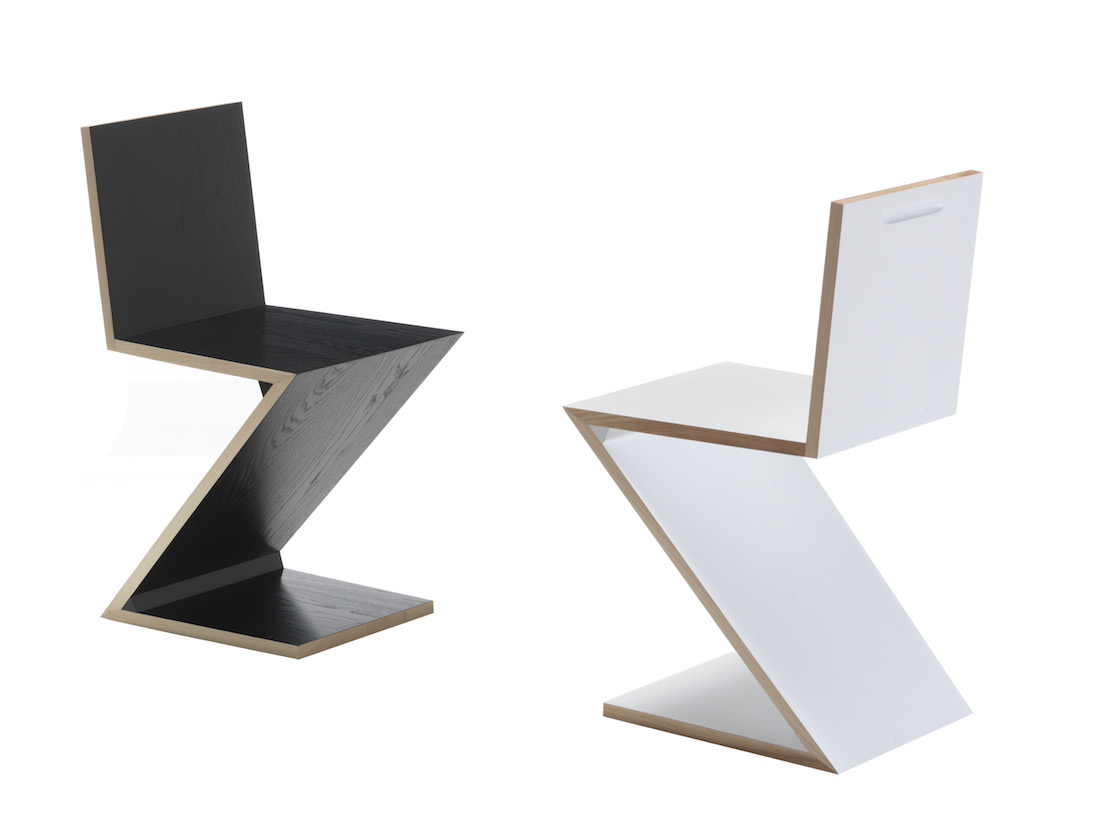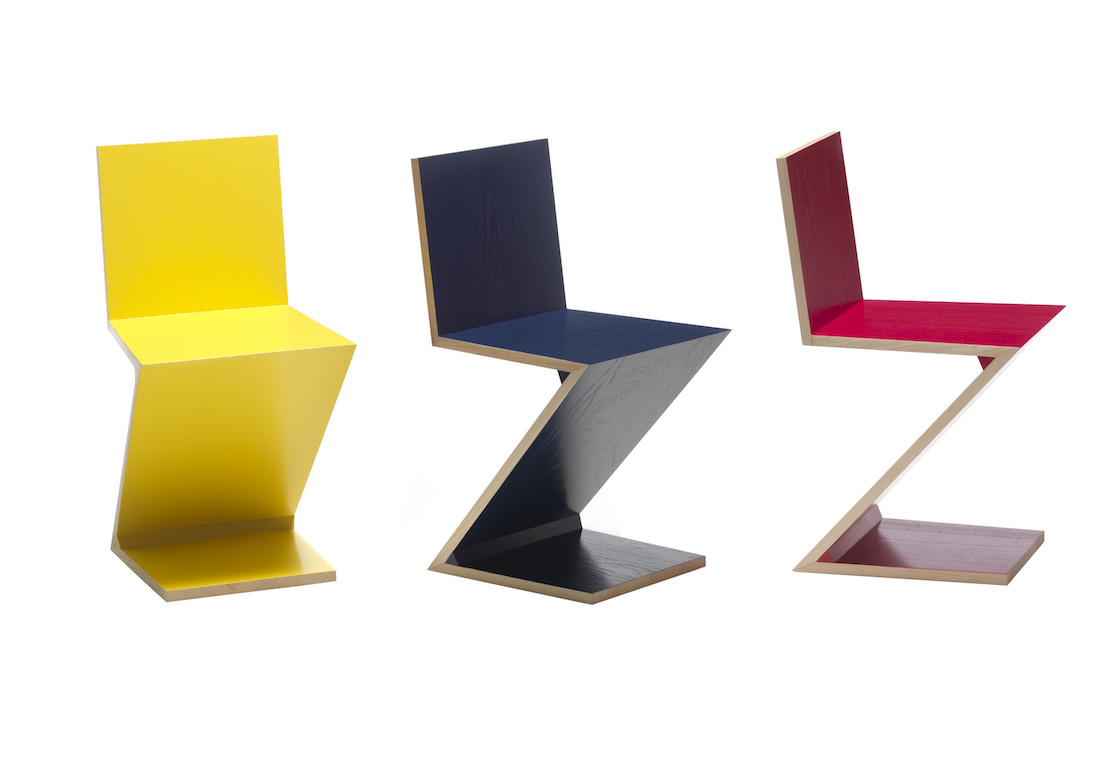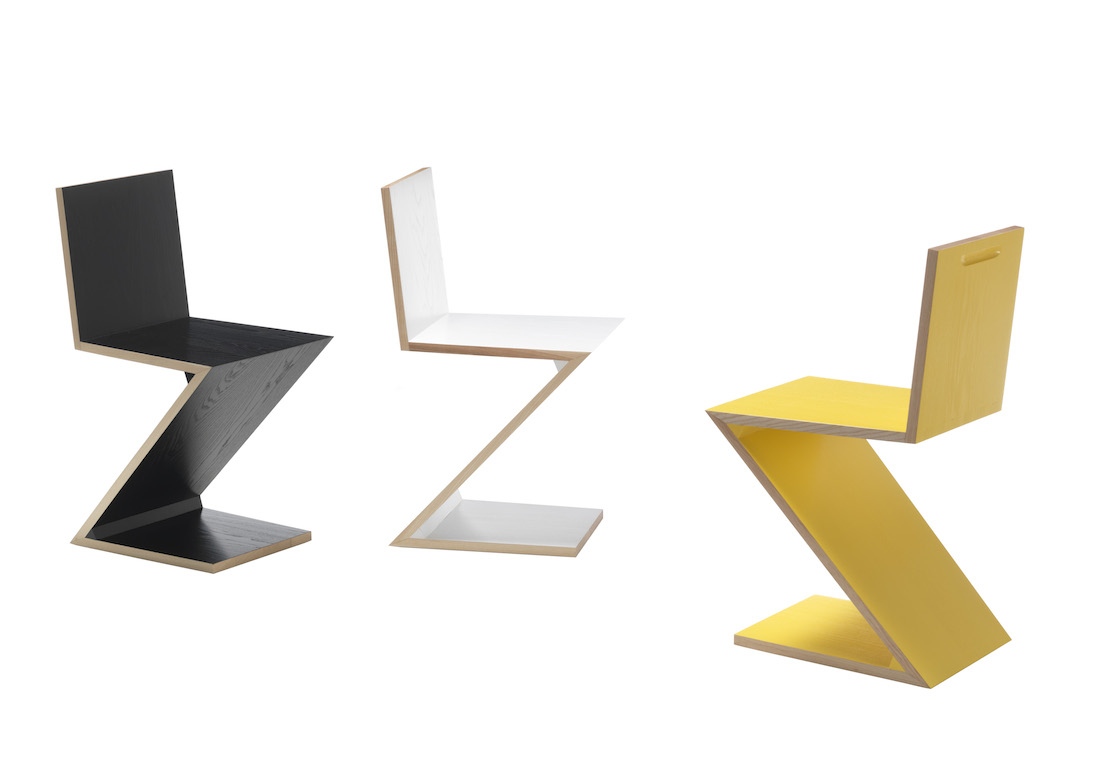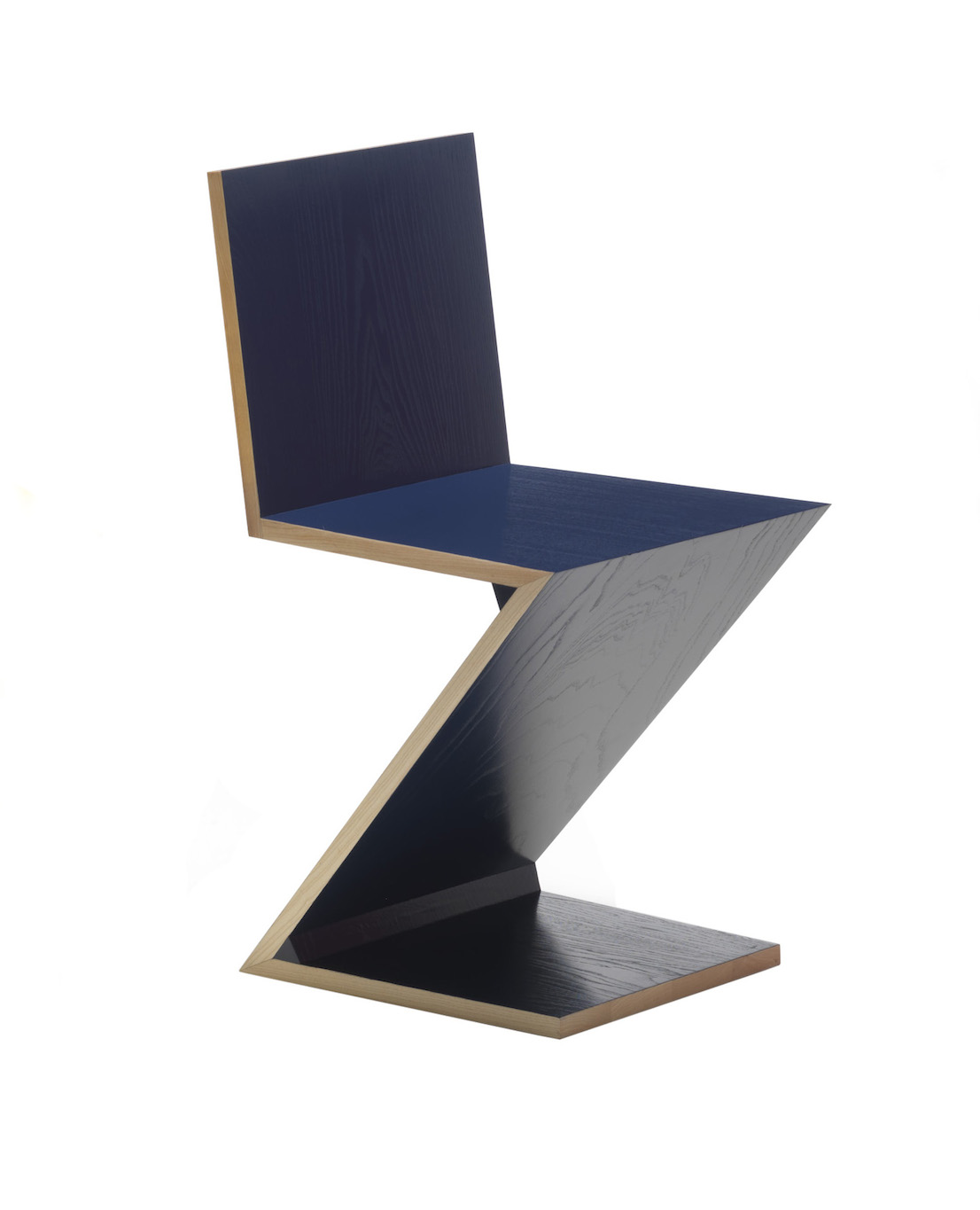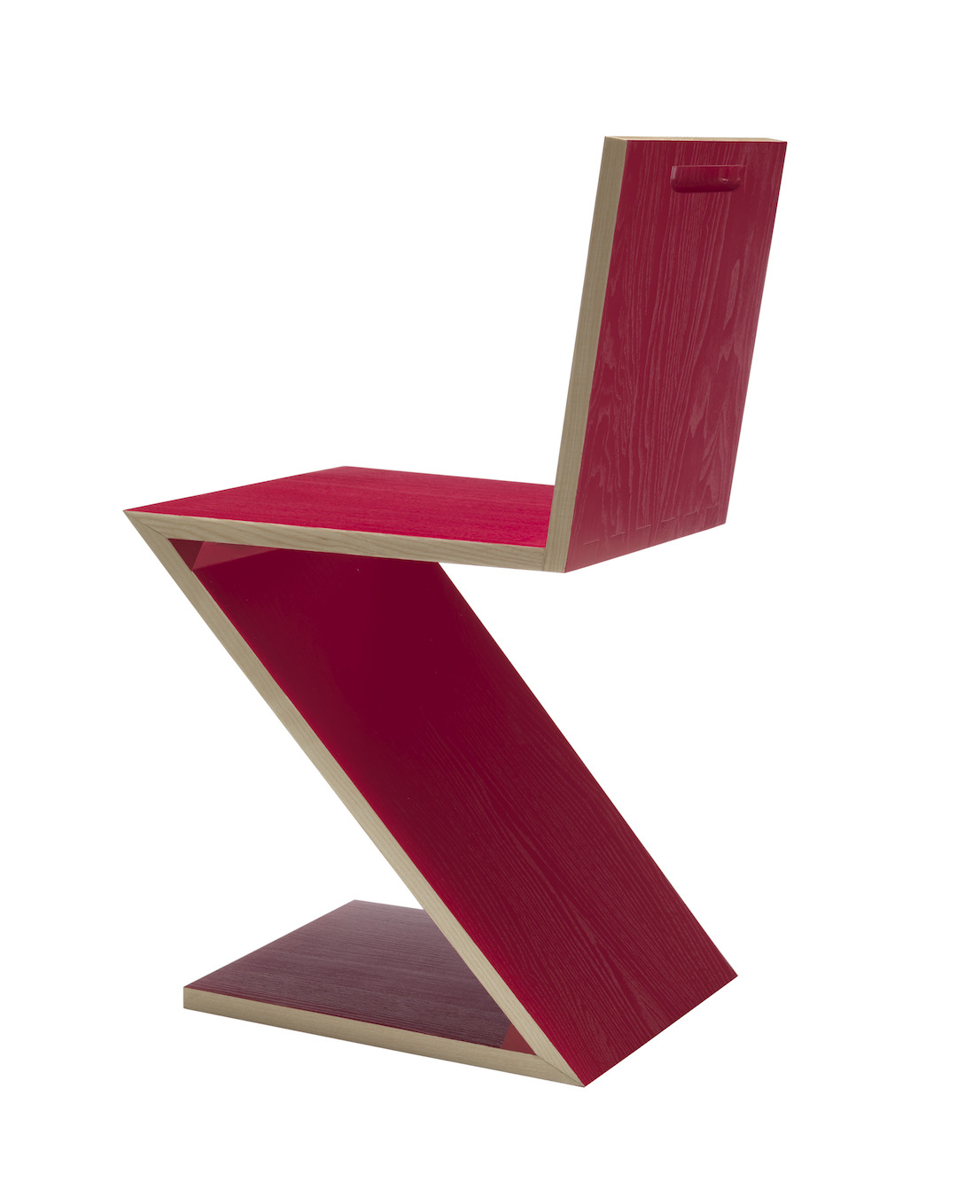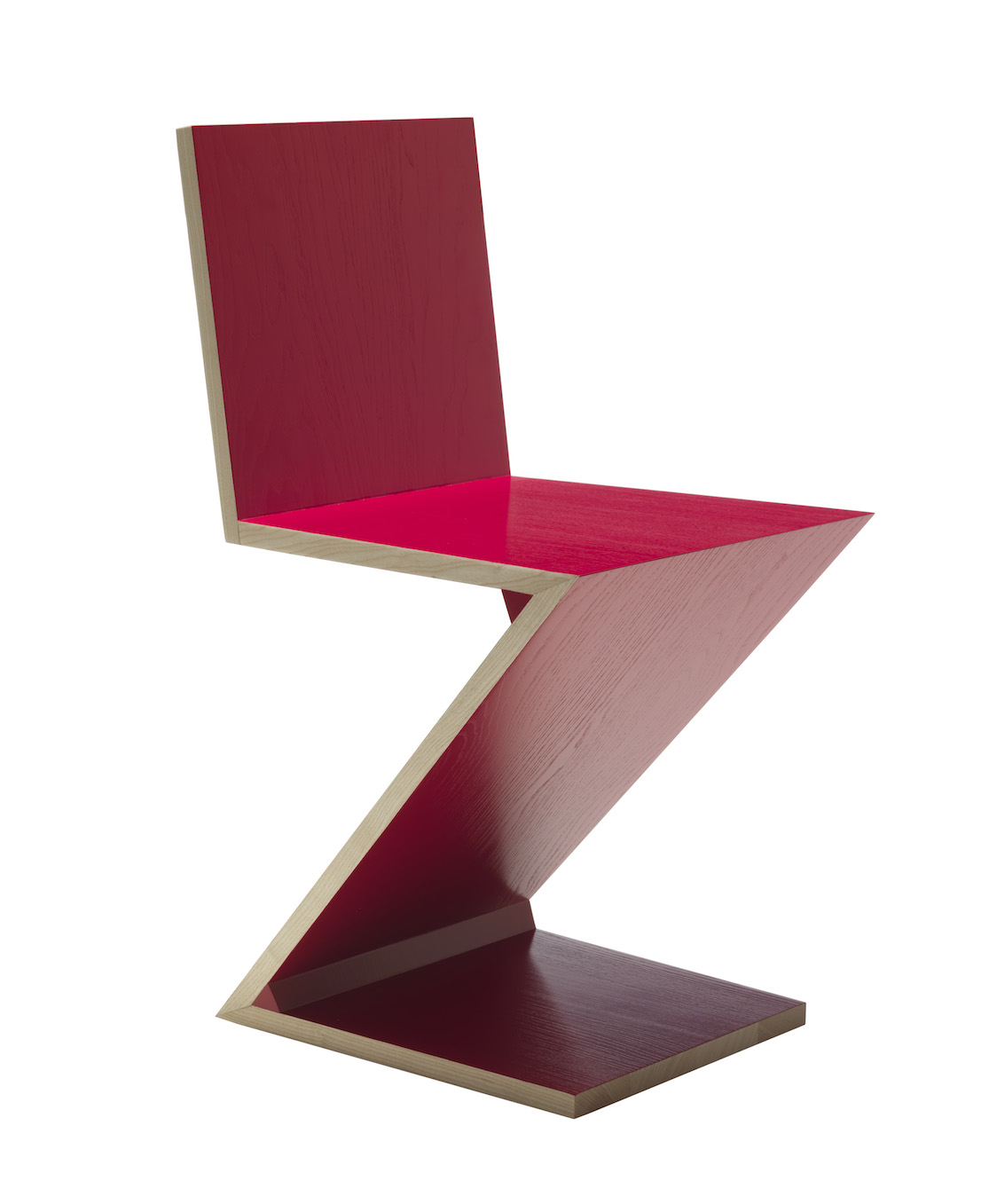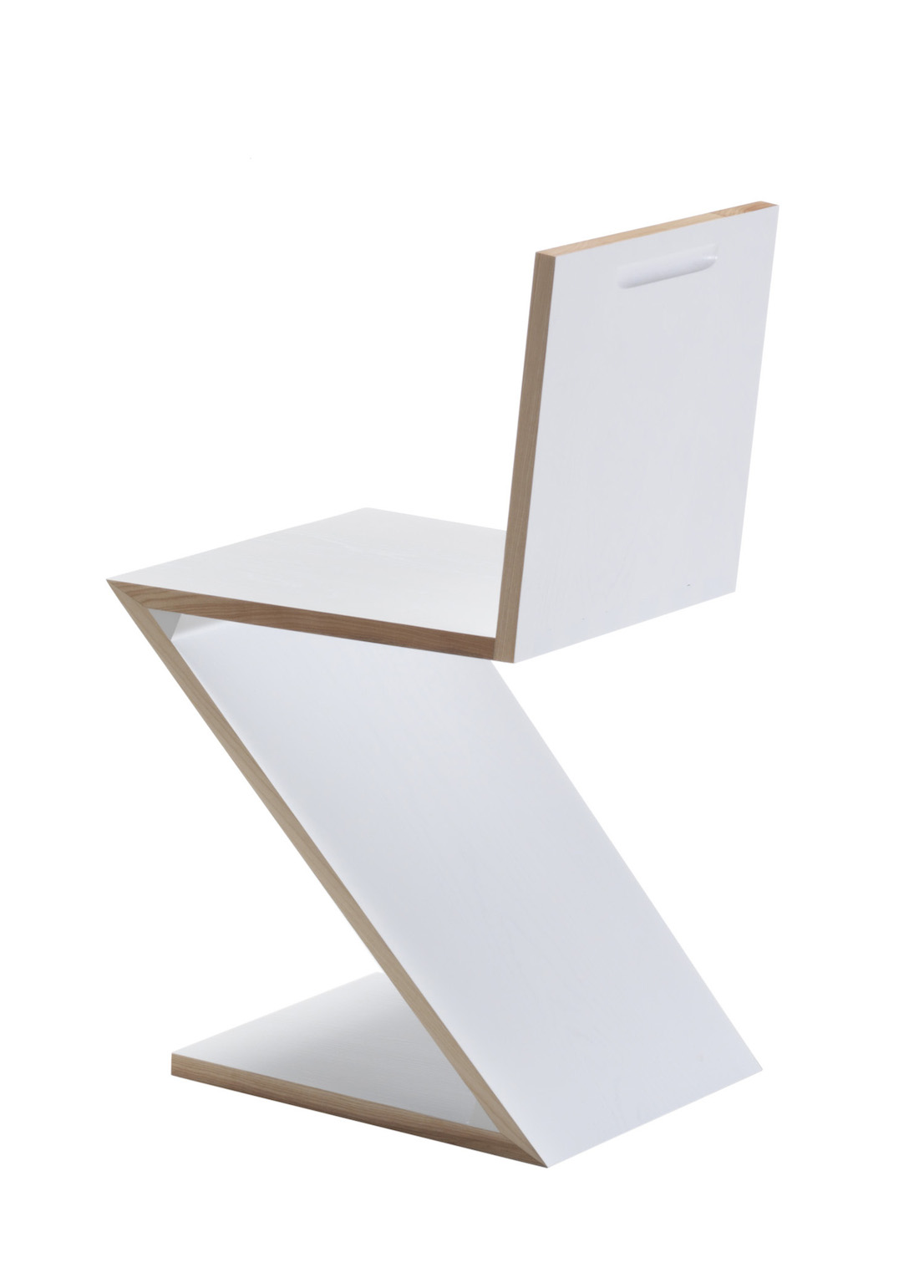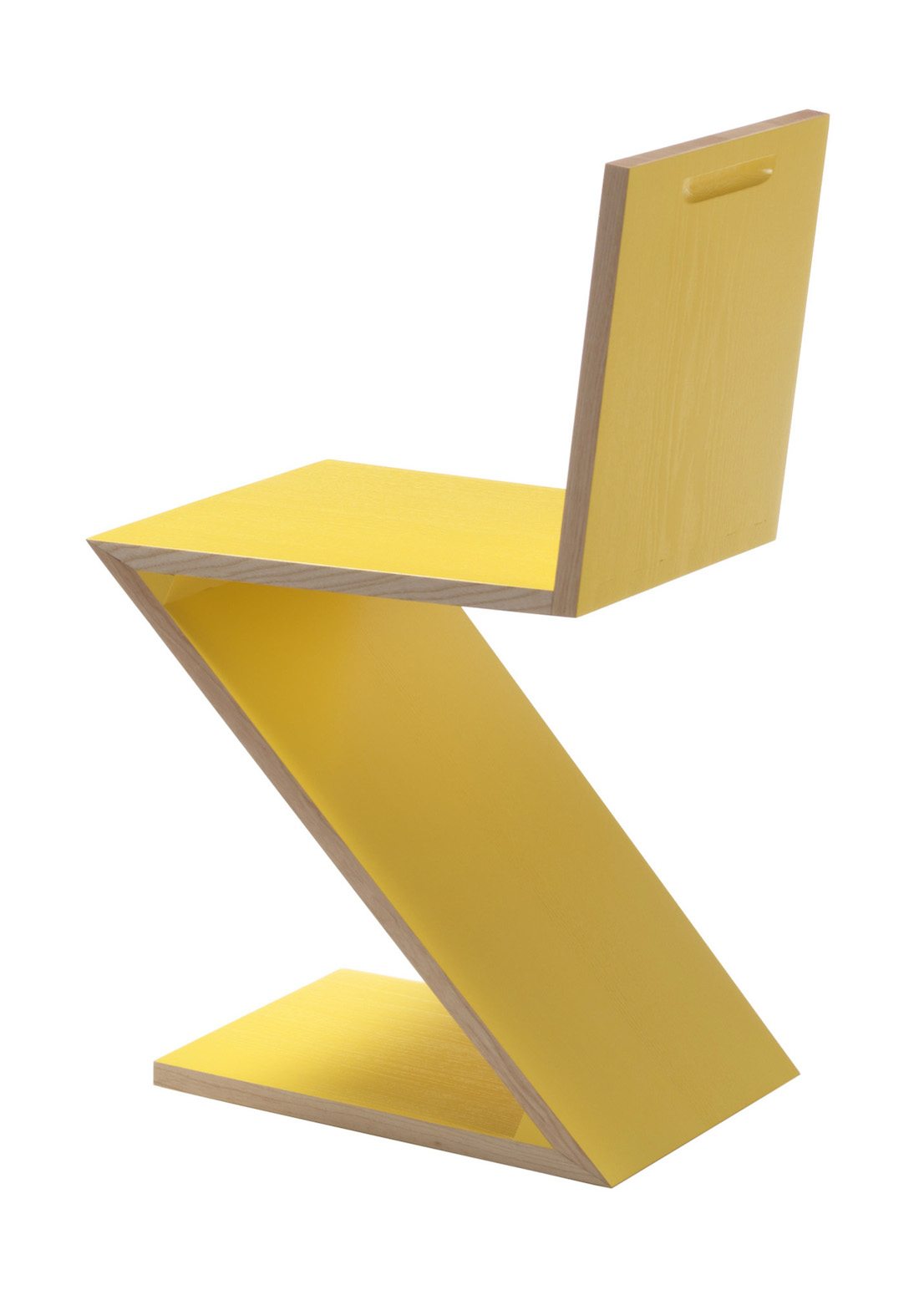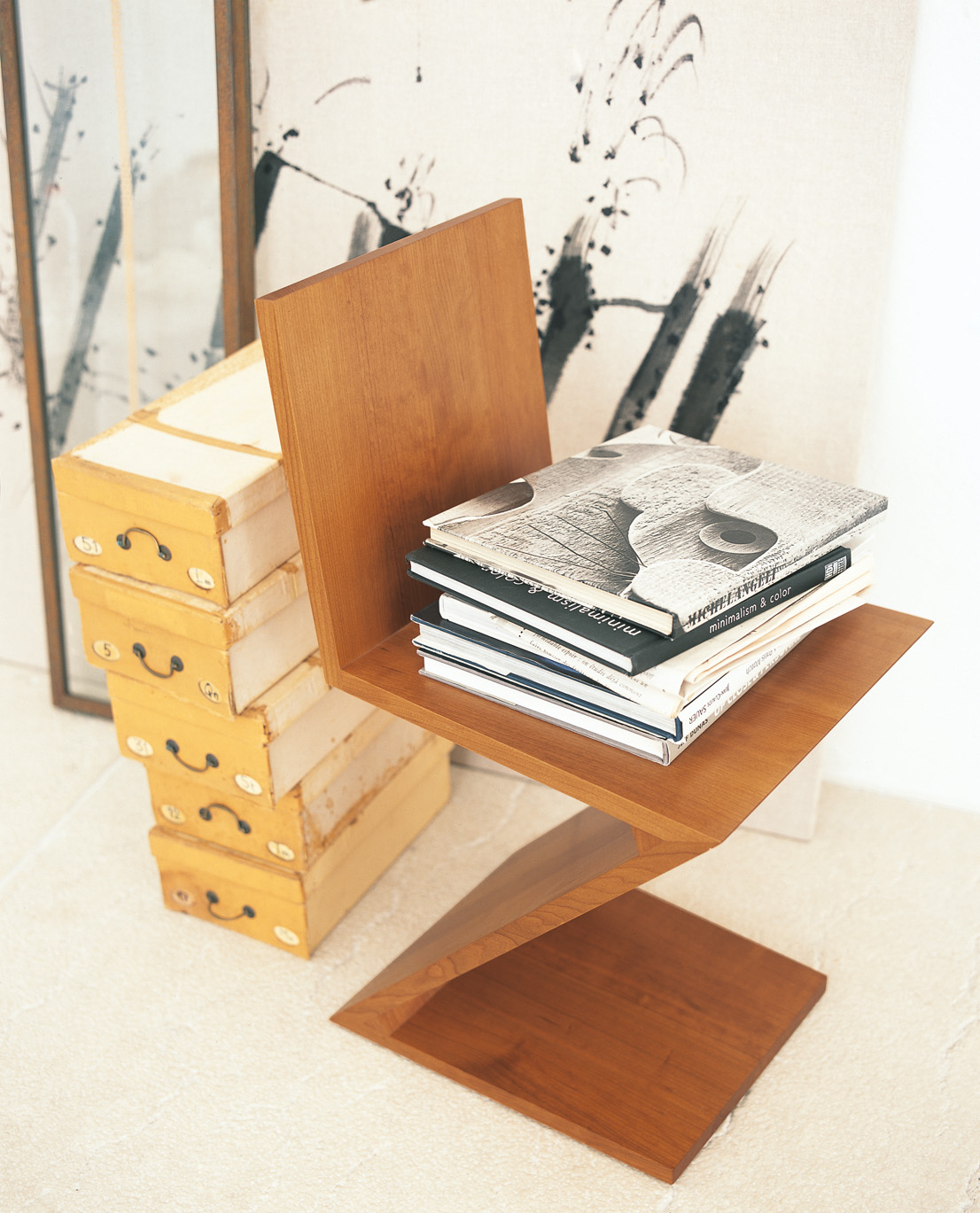19 December 2013
The profile and name of this famous chair bring to mind a broken line. In reality, the idea of its brilliant designer was to create a form without a break between the various components. The Dutchman Gerrit Rietveld, leading exponent of the De Stijl movement, was an indefatigable investigator of forms and materials. One of his most important themes was bendability: i.e., the possibility of creating three-dimensional structures out of flat or linear elements. In fact, the starting point for the Zig Zag, celebrated icon of the 20th century, was a model made of metal tubing with an S-shaped profile, able to unify seat, back and legs in a continuous line. Then the design evolved into a curvilinear version made of plywood and finally into this, the best-known one, made of four boards linked together by simple dovetail joints and a pair of reinforcements. More than this, in terms of continuity between the elements, has only been achieved with the techniques of molding plastic. But the divine joiner of Utrecht remains the pioneer of the idea, way back in the 1930s. Manufacturer: Cassina.
